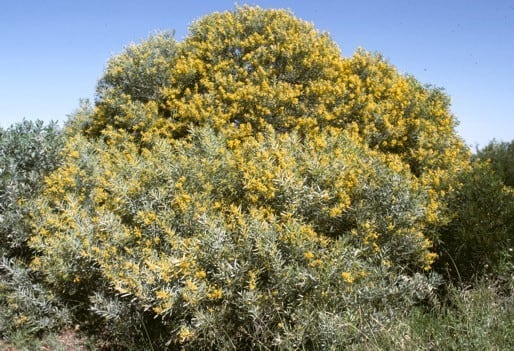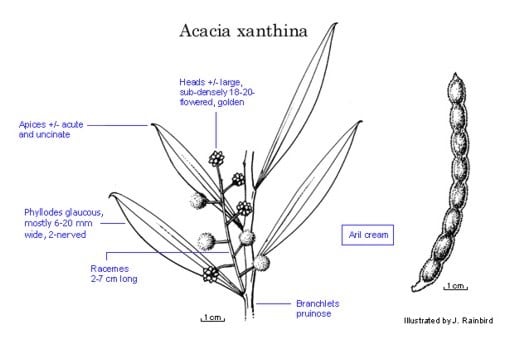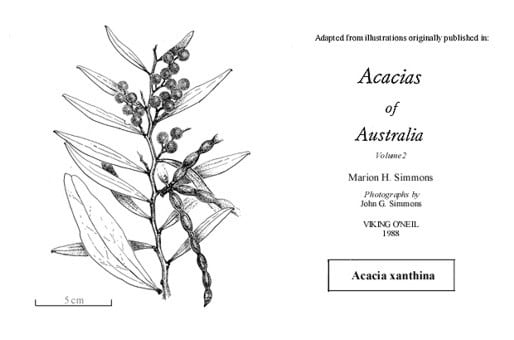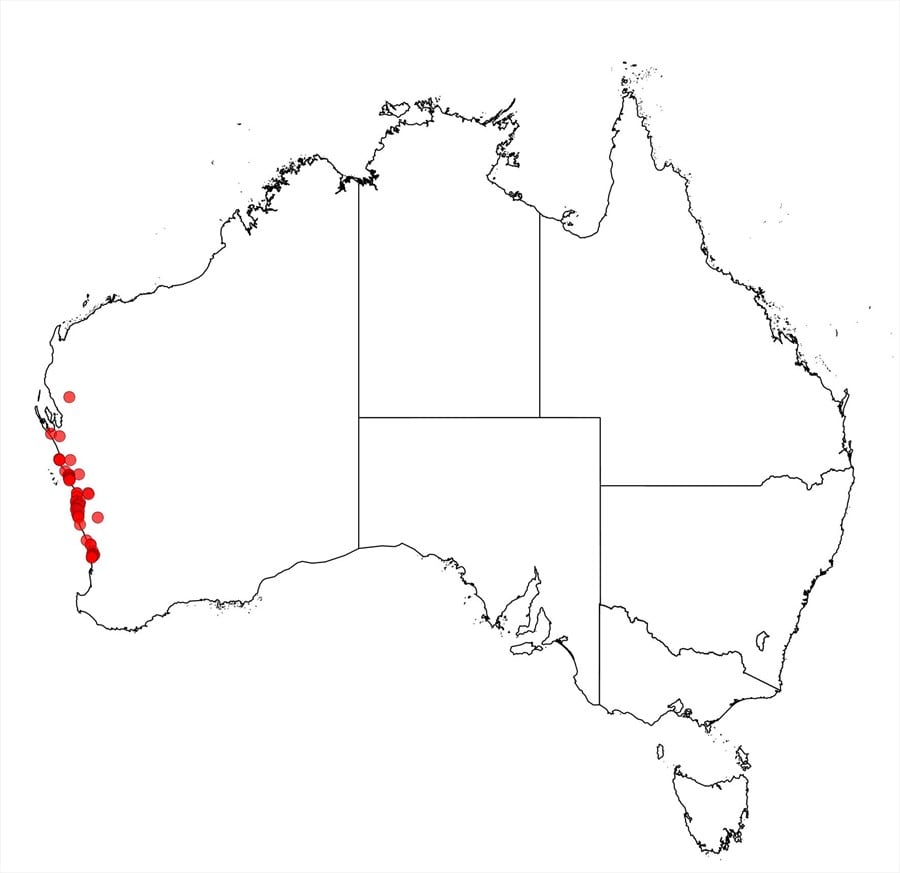Acacia xanthina Benth.
WATTLE
Acacias of Australia
Family
Fabaceae
Distribution
Coastal and near coastal areas from S of Kalbarri S to Fremantle and inland between Mingenew and Three Springs, W.A.
Description
Dense shrub or tree to 4 m high. Trunks often pruinose. Branchlets pruinose, glabrous. Phyllodes usually narrowly elliptic, usually 6–10 cm long, 6–20 (–25) mm wide, l:w = 3–15, ±acute and uncinate, thin, glaucous, glabrous, usually 2-nerved with adaxial nerve less pronounced than midrib; lateral nerves obscure; gland 2–5 mm above pulvinus, and at base of mucro. Inflorescences 3–9-headed racemes; raceme axes 2–7 cm long, robust, glabrous; peduncles 5–12 mm long, robust, glabrous; heads globular, 7–10 mm diam., to 12 mm when fresh, subdense, 18–20-flowered, golden. Flowers 5-merous; sepals united into a ±truncate calyx. Pods ±erect, submoniliform, to 11 cm long, 5–7 mm wide, firmly crustaceous, glabrous. Seeds longitudinal, oblong-elliptic, 5 mm long, dull, black; aril cream but drying yellow-brown.
Habitat
Grows in sand over limestone in scrub, thicket, mallee, woodland or low forest.
Specimens
W.A.: just N of Geraldton, A.M.Ashby 4629 (CANB, K, PERTH); Three Springs–Mingenew, J.S.Beard 1963 (PERTH); 20.6 km S of Kalbarri on track past coastal gorges, R.Cumming 1751 (PERTH); Leeman, E.A.Griffin 577 (CANB, MEL, PERTH); Reabold Hill, Perth Metropolitan Area, B.R.Maslin 2305 (PERTH).
Notes
Specimens from near Kalbarri are atypical in their linear-elliptic, consistently 1-nerved phyllodes to 13 cm long.
A member of the ‘A. bivenosa group’ most readily recognised by its pruinose branchlets, cream arils and long, broad phyllodes with usually 2 longitudinal nerves on each face (the adaxial one is the less pronounced and is occasionally absent) (fide A.R.Chapman & B.R.Maslin, Nuytsia 8: 280 (1992). Closely related to and commonly parapatric with A. rostellifera which occurs on coastal sand dunes whereas A. xanthina occurs on adjacent inland limestone ridges; A. rostellifera is distinguished by its scurfy, non-pruinose branchlets, red or orange aril and normally larger flower-head diameter. Near Jurien Bay the habitat specificity between A. xanthina and A. rostellifera breaks down in disturbed sites along road verges and the two species apparently hybridise. May resemble broad, glaucous phyllode forms of A. blakelyi which has horizontally flattened phyllodes with the gland situated on the adaxial surface (not the adaxial margin as in A. xanthina). Also related to A. didyma.
FOA Reference
Data derived from Flora of Australia Volumes 11A (2001), 11B (2001) and 12 (1998), products of ABRS, ©Commonwealth of Australia
Author
Minor edits by J.Rogers
A.R.Chapman, B.R.Maslin
This identification key and fact sheets are available as a mobile application:
URL: https://apps.lucidcentral.org/wattle/
© Copyright 2018. All rights reserved.










